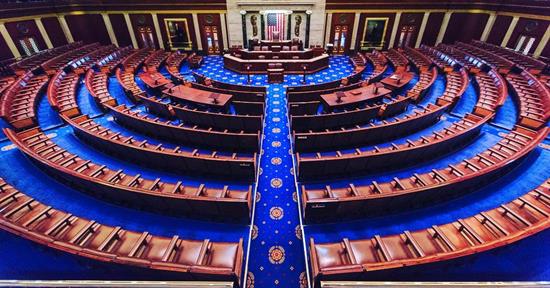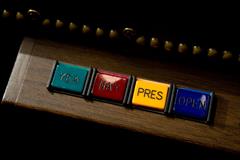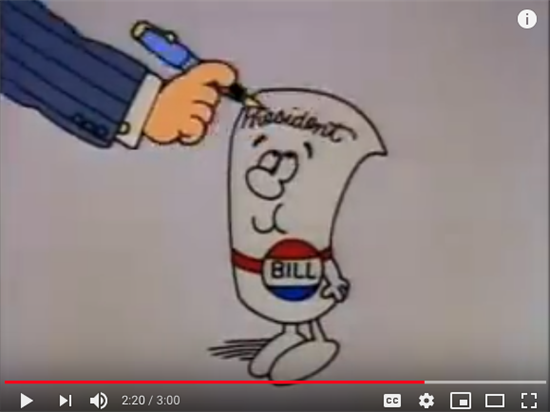what does it mean to lobby a bill

Creating laws is the U.South. House of Representatives' well-nigh important task. All laws in the United States begin every bit bills. Earlier a bill tin can get a law, information technology must exist canonical by the U.South. House of Representatives, the U.S. Senate, and the President. Let's follow a bill'southward journeying to become constabulary.
The Bill Begins
Laws begin equally ideas. These ideas may come from a Representative—or from a citizen like you. Citizens who have ideas for laws can contact their Representatives to discuss their ideas. If the Representatives agree, they research the ideas and write them into bills.
The Bill Is Proposed
When a Representative has written a pecker, the bill needs a sponsor. The Representative talks with other Representatives about the bill in hopes of getting their support for it. One time a bill has a sponsor and the support of some of the Representatives, it is ready to be introduced.
The Bill Is Introduced
In the U.S. House of Representatives, a bill is introduced when it is placed in the hopper—a special box on the side of the clerk's desk-bound. Only Representatives can introduce bills in the U.S. Business firm of Representatives.
When a neb is introduced in the U.S. Firm of Representatives, a bill clerk assigns it a number that begins with H.R. A reading clerk and then reads the pecker to all the Representatives, and the Speaker of the House sends the pecker to 1 of the House standing committees.
The Nib Goes to Committee
When the bill reaches committee, the committee members—groups of Representatives who are experts on topics such as agronomics, education, or international relations—review, inquiry, and revise the bill before voting on whether or not to send the bill back to the Business firm floor.
If the commission members would like more data before deciding if the bill should exist sent to the House flooring, the bill is sent to a subcommittee. While in subcommittee, the bill is closely examined and expert opinions are gathered before it is sent back to the commission for approval.
The Bill Is Reported
When the committee has approved a bill, information technology is sent—or reported—to the House flooring. In one case reported, a nib is prepare to be debated by the U.S. House of Representatives.
The Bill Is Debated
When a bill is debated, Representatives discuss the bill and explain why they concur or disagree with it. Then, a reading clerk reads the bill section by section and the Representatives recommend changes. When all changes accept been made, the bill is ready to be voted on.
The Bill Is Voted On

There are iii methods for voting on a bill in the U.S. House of Representatives:
- Viva Voce (voice vote): The Speaker of the Business firm asks the Representatives who back up the nib to say "aye" and those that oppose information technology say "no."
- Partition: The Speaker of the Business firm asks those Representatives who support the neb to stand upward and be counted, and and then those who oppose the pecker to stand upwardly and be counted.
- Recorded: Representatives record their vote using the electronic voting system. Representatives can vote yes, no, or present (if they don't want to vote on the bill).
If a bulk of the Representatives say or select aye, the beak passes in the U.S. Business firm of Representatives. The bill is so certified by the Clerk of the Business firm and delivered to the U.S. Senate.
The Beak Is Referred to the Senate
When a bill reaches the U.S. Senate, it goes through many of the same steps it went through in the U.Due south. House of Representatives. The bill is discussed in a Senate committee and and so reported to the Senate floor to be voted on.
Senators vote by voice. Those who support the bill say "yea," and those who oppose it say "nay." If a majority of the Senators say "yea," the bill passes in the U.S. Senate and is ready to go to the President.
The Bill Is Sent to the President
When a bill reaches the President, he has three choices. He can:
- Sign and pass the nib—the bill becomes a law.
- Reject to sign, or veto, the pecker—the beak is sent back to the U.S. House of Representatives, along with the President's reasons for the veto. If the U.South. Business firm of Representatives and the U.S. Senate notwithstanding believe the bill should become a law, they can hold another vote on the bill. If two-thirds of the Representatives and Senators support the bill, the President's veto is overridden and the pecker becomes a law.
- Practice nothing (pocket veto)—if Congress is in session, the beak automatically becomes law later 10 days. If Congress is not in session, the bill does non become a law.
The Pecker Is a Law
If a neb has passed in both the U.S. House of Representatives and the U.Southward. Senate and has been approved by the President, or if a presidential veto has been overridden, the nib becomes a police force and is enforced past the regime.
To learn more, lookout this advisory video:

cartwrightarage1945.blogspot.com
Source: https://trahan.house.gov/kids/how-a-bill-becomes-a-law.htm
0 Response to "what does it mean to lobby a bill"
Postar um comentário